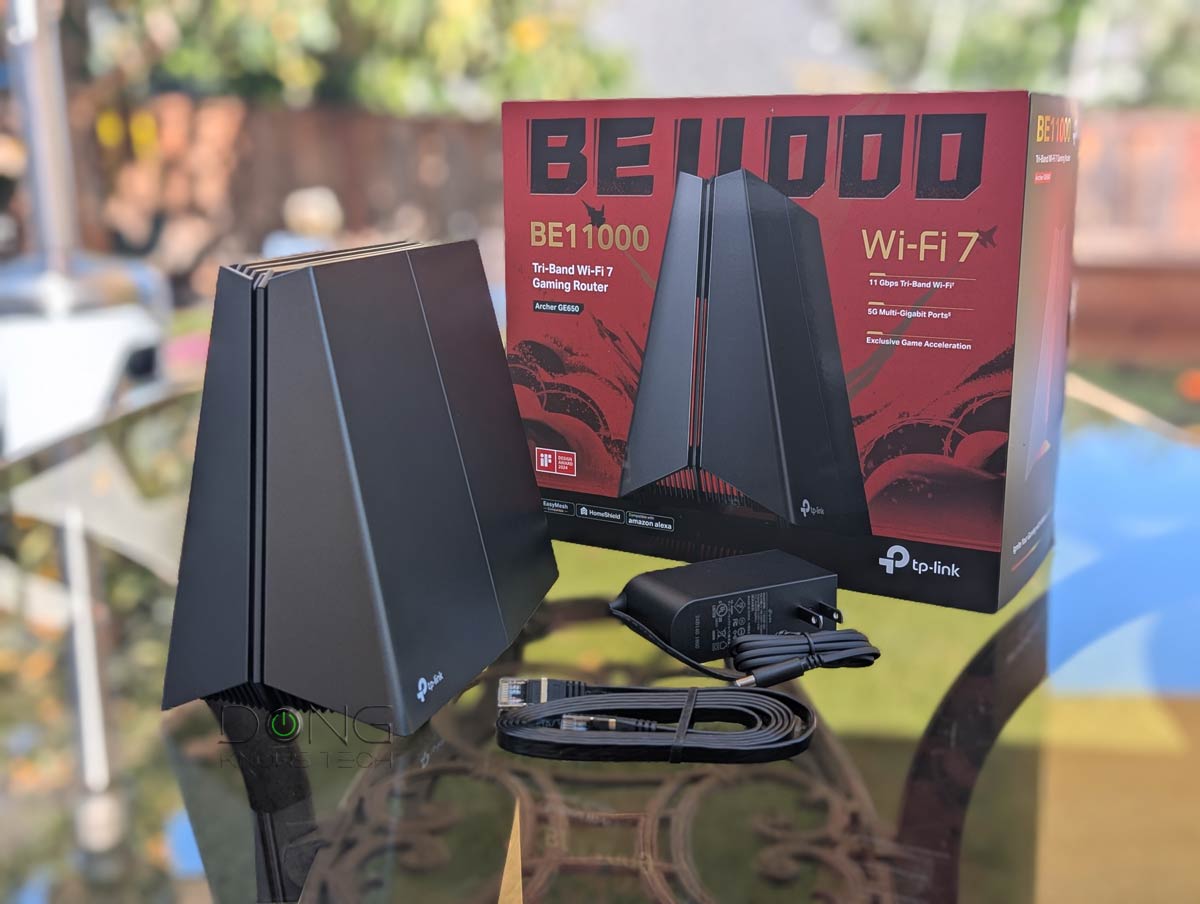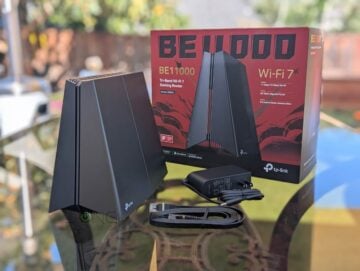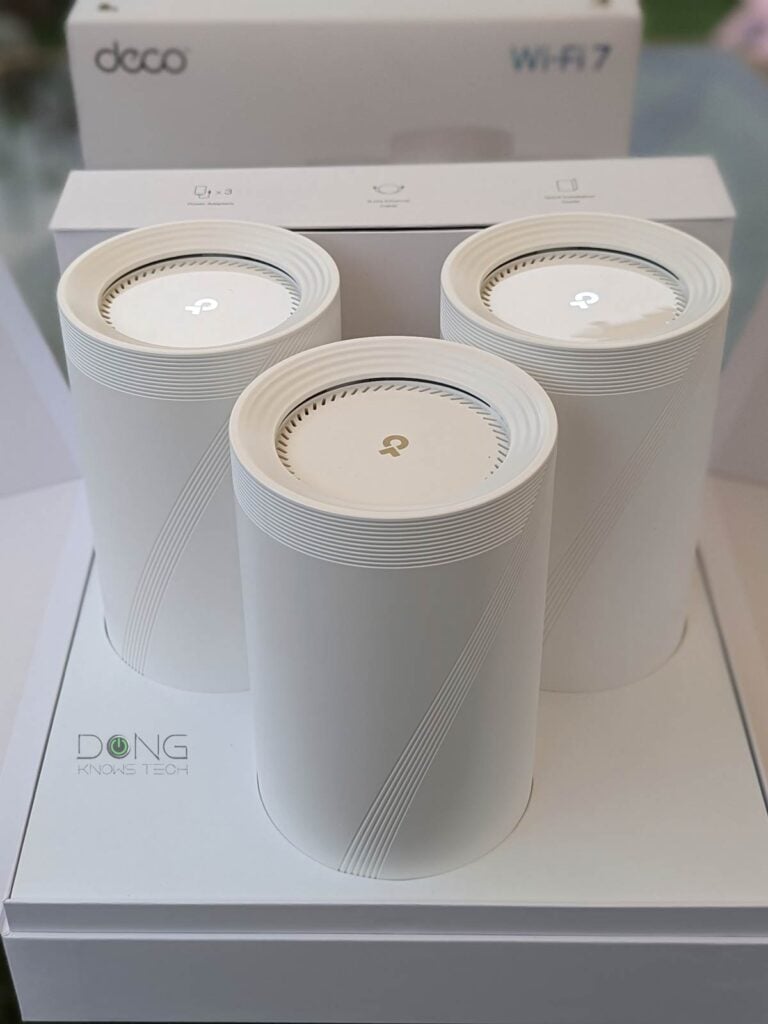If you’re looking to improve your Wi-Fi but on a budget, TP-Link is generally a good brand to consider. That is, if you can wade through the increasing myriad hardware variants that are close to identical to one another.
This post will help.
Below are the top five affordable TP-Link Wi-Fi 7 hardware options—routers and mesh systems—that are affordable yet not cheap. Pick one, and chances are you won’t be disappointed with its cost-over-performance ratio.
Dong’s note: I first published this post on April 16, 2025, and last updated it on July 21, 2025.
Affordable TP-Link Wi-Fi 7 hardware options: Today’s list
These routers and mesh systems are all on sale at lower costs than their original suggested retail price. The list is sorted by pricing, with the lowest on top.
Top 5 affordable TP-Link Wi-Fi 7 broadcasters
 |  |  |  | |
| Name | TP-Link Archer GE650’s Rating | TP-Link Deco BE25 (Deco BE5000)’s Rating | TP-Link BE6500 Archer BE400’s PRELIMINARY Assessment | TP-Link Deco BE63’s PRELIMINARY Assessment |
| Price | – | – | – | – |
| Rating | ||||
| Description | ||||
| Statistics | ||||
| Buy this product |
1. Archer GE650 (BE11000)


The Archer GE650 is a lesser version of the gigantic Archer GE800, yet better in more ways than one. It’s TP-Link’s second true gaming router. With tri-band Wi-Fi 7, two 5 Gbps, and three 2.5Gbps Multi-Gig ports, it has everything for an entry-level multi-Gigabit home network. The support for EasyMesh is always a bonus.
TP-Link Archer GE650's Rating

Pros
Excellent performance for the specs.
Two 5GBASE-T, three 2.5GBASE-T ports in a compact, fanless, cool-looking design
Robust web user interface with a generous set of free network features, including MLO and gaming-related functions
Competitively priced, EasyMesh-ready
Cons
No 10Gbps ports, mid-tier Wi-Fi 7 specs, no AFC
Online protection and advanced parental controls require subscriptions
Not wall-mount-ready
2. Archer BE230 (BE3600)

For less than $100 (after discounts), this standard router is by far the most affordable Wi-Fi 7 router to date. Still, with all 2.5Gbps ports and dual-band Wi-Fi 7, it has enough power to deliver Gigabit broadband (even faster) in full. Need extra coverage? Get a few units and link them together via EasyMesh, preferably via wired backhauling.
3. Deco BE25 (BE5000)

The Deco BE25 is one of the first dual-band Wi-Fi 7 mesh systems on the market. With decent Wi-Fi specs and two 2.5Gbps ports per unit, it has enough to deliver fast broadband in a large home, again, preferably via wired backhauling. The compact mesh router is available in 3-pack, 2-pack, or single router, making it suitable for any budget-minded situation.
TP-Link Deco BE25 (Deco BE5000)'s Rating

Pros
Reliable Wi-Fi performance; dual 2.5Gbps ports with excellent wired backhauling
Super affordable for Wi-Fi 7 hardware; standard set of free networking and features
Compact, eye-catching, fanless design; easy to use
Cons
Short range, minimum Wi-Fi 7 specs with matching performance
Security+ and advanced Parental Controls require subscriptions.
TP-Link login account and mobile app required; no web-based management
4. Archer BE400 (Archer BE6500)

The Archer BE6500, which has a variant that goes with the Archer BE400 model name, is the upgraded version of the Archer 230. It’s a dual-band Wi-Fi 7 router that won’t break your bank and has enough to deliver Gig+ Wi-Fi performance, or entry-level Multi-Gig wired connections.
TP-Link BE6500 Archer BE400's PRELIMINARY Assessment

Pros
Wi-Fi 7 with a 4×4 5GHz band; two 2.5Gbps Multi-Gig support; robust web user interface; a good set of network features and Wi-Fi settings
Useful (optional) mobile app; EasyMesh-ready; compact and practical design
Cons
No 10Gbps ports or Dual-WAN; no 6GHz
Online protection and advanced parental controls require login account and subscriptions
5. Deco BE63 (BE10000)

The Deco BE63 is the less expensive version of the Deco BE85 and proved to be the just-right hardware in terms of cost-over-specs ratio. For $500 for a 3-pack or $300 for a 2-pack, it’s one of the most affordable tri-band Wi-Fi 7 mesh systems you can find that can deliver up to 2.5Gbps of bandwidth.
TP-Link Deco BE63's PRELIMINARY Assessment

Pros
Four 2.5Gbps Multi-Gig ports, multi-Gigabit wired backhauling out of the box
Wi-Fi 7 support, backward compatible with existing clients; excellent overall real-world performance;
Easy to use; fanless
Cons
No 10Gbps ports or SFP+ support; mid-tier Wi-Fi 7 specs
Vendor-connected mobile app required; HomeShield Pro costs extra
The final thoughts
None of the hardware options mentioned above is the best on the market. (Check out this ultimate collection for that!) However, if you’re on a budget, any of them will get the job done, likely more than your expectations, considering their costs.


TP-Link does not work with the latest Comcast Gateways because the latter do not support IEEE 905.1 protocol.
All routers works with all gateways as long as they use the same type of network cables and BASE-T ports which they do, James.
Their mesh system will noit get an ip address. Nor will the mesh network work. I tried it.{…}
Try again, James. Or maybe get a new gateway since the one you had might be defective. And no spam, please.
I know it’s been awhile, but in reading this I looked a little into his claim. According to Google AI, “IEEE 905.1” is probably typo. In this context he probably meant IEEE 1905.1, a standard originating out of Powerline supporters in the early 2010’s that was intended to simplify setting up a home network combining Powerline & MoCA with Ethernet & Wi-Fi. It probably fizzled because Powerline fizzled (never that fast, security issues possibly even worse than Wi-Fi) and cable ISPs have moved away from combining DOCSIS & MoCA over the same coax, leaving “dark coax” MoCA (almost always with basic Ethernet adapters, as in MoCA 2.5 as you have often suggested) as arguably the only truly viable alternative to Ethernet & Wi-Fi as mainstream home networking platforms. Those shouldn’t need anything like IEEE 1905.1 to cooperate with each other, as Ethernet & Wi-Fi have co-existed for many years while MoCA 2.5 is just an easier alternative to rewiring your house with Cat 5e & up for wired connections.
From the OP’s complaint that he never got an IP address, I suspect he may have simply had a “double NAT” situation, and latched onto that standard as an excuse to return his mesh system instead of taking the usual steps to resolve it. Even if his Xfinity gateway didn’t support bridging its router side (not surprising), he could have always replaced it with any of numerous cable modems (whether rented from Xfinity, presumably like his gateway, or preferably purchased), or at the very least set up his mesh router in AP mode (virtually all TP-Link & other mesh systems support that, including my Deco BE63 though I’ve never had to use it as it replaced my ISP-supplied router AND mesh node, leaving only my ONT / “modem” from them).
There are no 2.5 GHz cable modems compatible with Comcast. I got a Netgear Mesh system and it works properly—it does not require IEEE 1905.1. TP-Link and I had many phone conversations (at odd hours), with no success. I am pretty capable at setting up LANs, and tried using the TP_Link as a router and as part of the Comcast LAN. Neither worked due to the Ethernet backhauls that are incompatible with TP-Link. I also had to change all of my bridges to support 2.5 GHz, and made sure they were IEEE 1905.1 compatible.
Follow-up: Either that, or the OP thought he could get by with a single MoCA adapter & have it connect directly to his gateway thru its coax input, as when DOCSIS & MoCA co-existed on the same coax; that’s no longer the case with newer DOCSIS revisions that need most if not all of your coax drop’s bandwidth just to provide regular Internet to you & your neighbors. If that was the case, he should have isolated the stretch of coax he needed from the rest of his cable wiring, bought a second MoCA adapter compatible with the first, and connect them via Ethernet to his gateway on one end & his mesh router on the other.